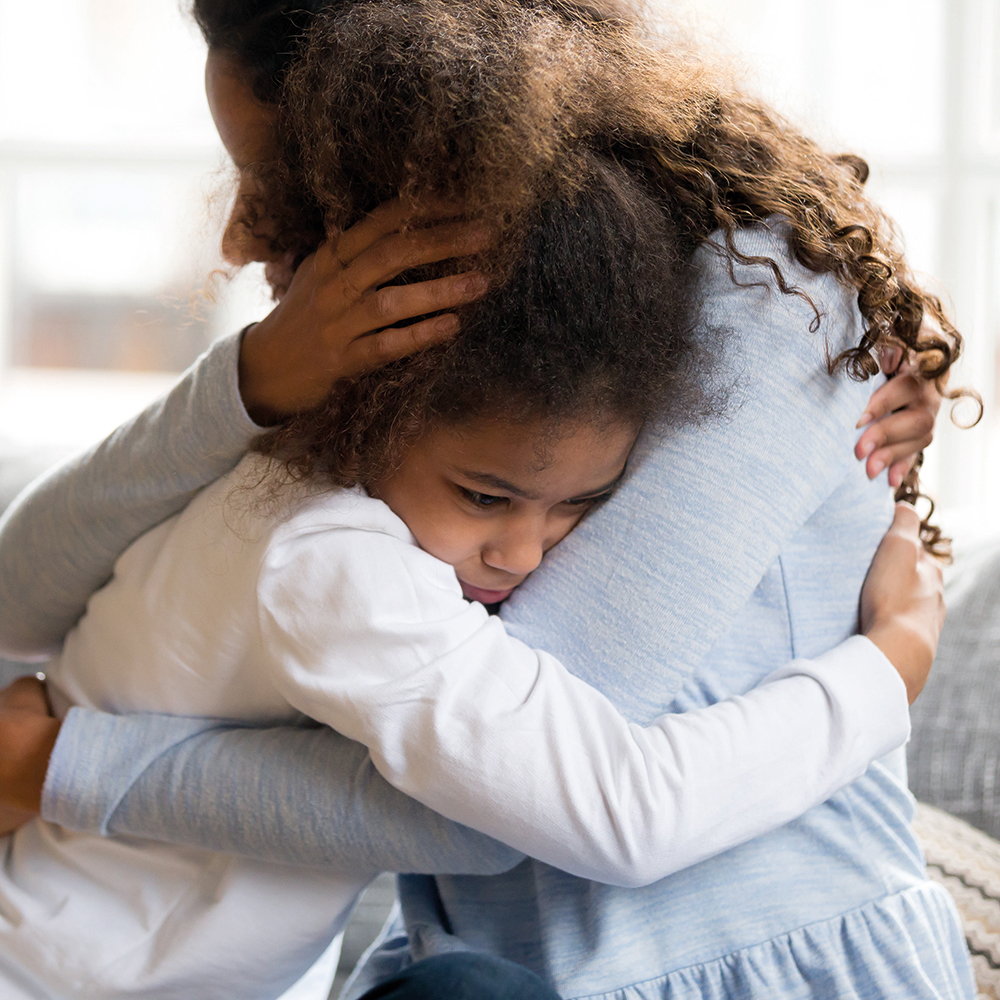Part 2 - The connections we build
"Kids don’t learn from people they don’t like." - Rita Pierson
Why connections matter
As humans we are born to connect. To build relationships that will not only shape the development of our brains, but ensure both our enjoyment of the world and our survival in it.
Children who have healthy connections with the adults and peers around them are likely to develop the ability to understand others' needs, feelings and thoughts; becoming more emotionally resilient and well adapted.1
What happens when these connections aren’t built?
In the 1970s, Edward Tronick PhD, a development psychologist, professor and director of The Child Development Unit at the University of Massachusetts, designed an experiment that shed light on the importance of attuned interactions, even in babies' earliest months of life. It was named, 'The Still Face Experiment'.
Tronick and his colleagues observed babies’ reactions while they interacted with their mothers. After a few minutes, mothers were asked to hold an expressionless face. This caused babies to attempt to regain their parent’s attention. The more they tried and failed, the more distressed they became.
VIDEO
The 'Still Face Experiment' proved that even as infants we pick up on other people’s emotions and have emotional and physiological responses to these interactions.
Effects of lack of connection
Advances in neuroscience have highlighted the importance of the effects of neuronal pathways - producing associations between feelings, thoughts, memories and experiences - when it comes to building connections to others. Pathways that are strengthened, be these in relation to positive or negative life experiences or relationships, tend to be used again and again.
Leading connection scientist and public speaker, Dr Suzanne Zeedyk uses an analogy – “motorways in the brain” - to exemplify how human experiences and their associated feelings form paths in the brain.2
“The brain has a transport system made up of neural networks. An analogy can help us understand how it got built. Like all transport systems it didn't begin that way. Once upon a time, it was more like an open field filled with green grass and no pathways. When you first walk across this field and turn around you can see where you walked through because the grass is turned down, but a few hours later the grass has popped back up - unless you start to walk that path every day”, explains Dr Zeedyk.

“After a few days the grass won’t pop up as much. And after a few weeks, as you walk back and forth to the same place, there will be a path there. The more you use the path the more embedded it becomes and after a while other people come and they walk along that same path. Now we have more traffic. Then after a while the council comes along and decides there is a road there. They first put gravel down, later tarmac and if it is used enough, they turn it into a motorway,” adds Dr Zeedyk.
Dr Zeedyk goes on to explain that every time a baby travels to a ‘village’ called: excitement, joy, fear or loneliness, another path appears. The more often the baby travels to each of these places, the road to them becomes stronger.
Neuronal plasticity, or the ability to build and make these connections, is at its most malleable during the initial stages of development. This means that the absence of healthy emotional relationships during the early stages of brain growth will make it harder to establish these types of bonds later in life, and is associated with an increased risk of depression, anxiety disorders and possible learning and memory impairments.3
“The question is – which of these places did the baby travel to the most often? Once that transport system is established it is used to negotiate how to read the world. This transport system is not only embedded in the brain, but throughout your biology – your muscles, your stomach and hormones,” says Dr Zeedyk.
The benefits of connecting
As adults we feel the benefits the healthy relationships we have built with the people around us daily - be them: teachers, pupils, parents, children, partners, friends, or anyone that we have positively connected with. Life becomes easier, more enjoyable.
We feel safe and protected and can engage with our surroundings. These links are important during all stages of life – reducing anxiety, depression and improving self-esteem and empathy – but even more so during early years, childhood and adolescence.
In her inspirational Ted Talk, Rita F. Pierson, an educator with 40 years of teaching experience, tells her audience how a colleague once told her that she was not paid, “…to like the kids. They pay me to teach a lesson…” To which Rita quickly replied, “Kids don’t learn from people they don’t like.”

What has become clear to Pierson through her years of working with children and young people, is that the quality of the relationships of trust and empathy established between teachers and their students correlates with their ability to face life’s challenges – and have long reaching positive effects well into their futures.
Pierson’s understanding of the importance of relationships is confirmed by Harvard University's Centre on the Developing Child who state that, “healthy development depends on the quality and reliability of a young child’s relationships with the important people in his or her life, both within and outside the family.”1
Strong connections help anxiety stay low enough so that children, and humans in general, can access the rational and thinking part of their brain.
As Dr Zeedyk puts it, “There are no blackboards when you travel to a place called anxiety."
Build to last
Children and young people need positive connections with adults and peers – these will set the ‘roads’ that they can use throughout their lifetime. Positive connections with others are not only the foundation on which their understanding of the world is built on, they are also what will allow them to feel present, learn, deal with big emotions, and simply put, enjoy life.
Asked what she considered to be the most important way of building positive connections that will last and that benefit any baby, child, adolescent or adult, Dr Zeedyk does not hesitate.
“Laughing is without a doubt the most important factor. You only laugh with people you feel relaxed with. If you have laughter, then you have trust; and you are sharing a moment.”

The roads to fear and anxiety are important as these places help us survive. What we need to help children and young people do when they find themselves in those places is to travel back to feelings of connection, safety and the prize of all prizes, laughter.
Connection and the Thrive Approach
The Thrive Approach is underpinned by neuroscience, child development and attachment theory research.
Thrive uses insights from child development and attachment theory because it helps adults to understand children and young people's needs, connect to them, and develop empathy and compassion for those in their care.
As an attachment-aware approach, Thrive shows how building strong connections can improve learning, outcomes, and children and young people's sense of security and emotional resilience. Ultimately, this can lead to happier schools, and children and young people leading fuller, healthier lives where they are able to thrive.
Coming up next...
The final part of this series will explore the importance of creating emotional safety for the children and young people you work with. Add us to your safe senders list to ensure you get these insights straight to your inbox.
Also...
You can hear more brilliant insights from Dr Zeedyk in her webinar "How Covid Changed Our Children and Young People"
If you are new to Thrive - click here to book your place.
If you are a Licensed Practitioner - click here to book your place.
References
1 - National Scientific Council on the Developing Child. (2004). Young children develop in an environment of
relationships. Working Paper No. 1. Retrieved from http://www.developingchild.net
2 - Dr Suzanne Zeedyk, is a research scientist fascinated by babies’ innate capacity to communicate. Since 1993, she has been based at the University of Dundee, Scotland, within the School of Psychology, where she now holds an honorary post. https://suzannezeedyk.com/
3 - Winston, Robert, and Rebecca Chicot. “The importance of early bonding on the long-term mental health and resilience of children.” London journal of primary care vol. 8,1 12-14. 24 Feb. 2016, doi:10.1080/17571472.2015.1133012 https://www.ncbi.nlm.nih.gov/pmc/articles/PMC5330336/
